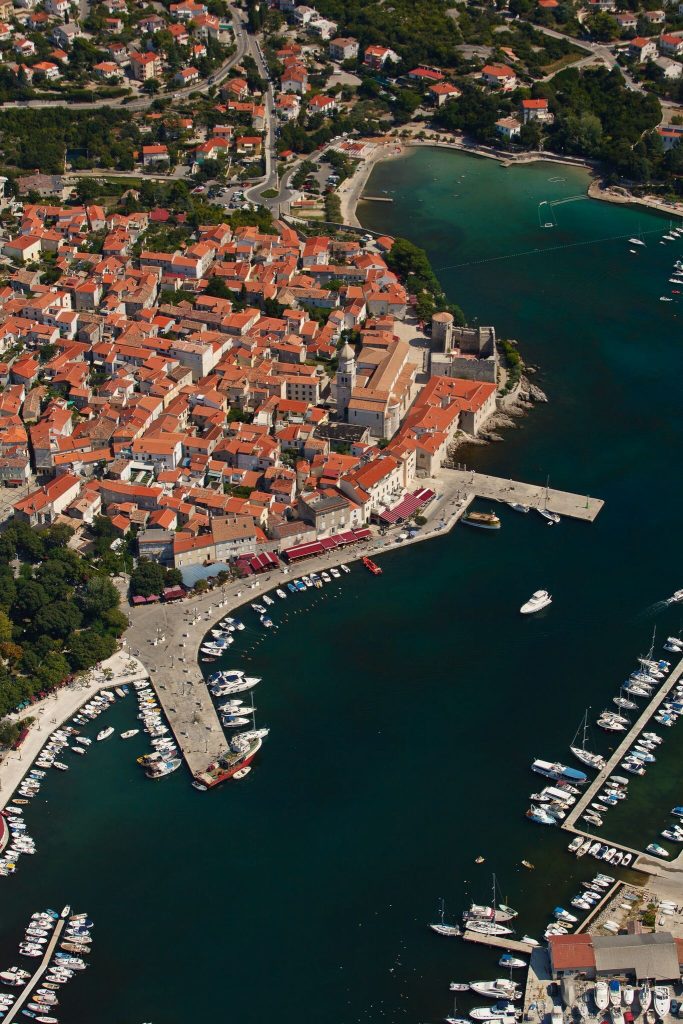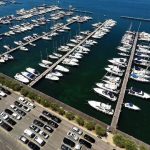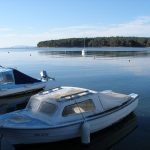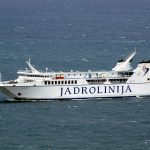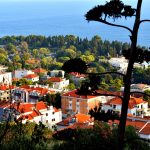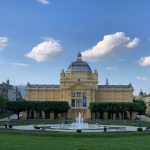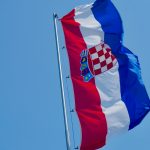Continuing with our alphabet series, a love letter to islands sprinkled with some local history on April 27, 2018
You’ve probably realised by now we’re obsessed with Croatian islands around here. Some of the previous alphabet features have required serious investigative work, perusing kilometre-long lists of islands in order to find one or two that would rise to the occasion. This time around, we got lucky – the K feature could very well be a standalone island piece. All the locations listed make for perfect sailing destinations and are equipped with sleek marinas and charming ports, hand in hand with fantastic restaurants and authentic Mediterranean towns and villages you can explore. Starting from the north and making our way down the Adriatic, a look to several island destinations, national parks and historic figures. And speaking of those marinas and ports, you can find a comprehensive list containing all the information you’ll need on Total Croatia Sailing.
K is for…
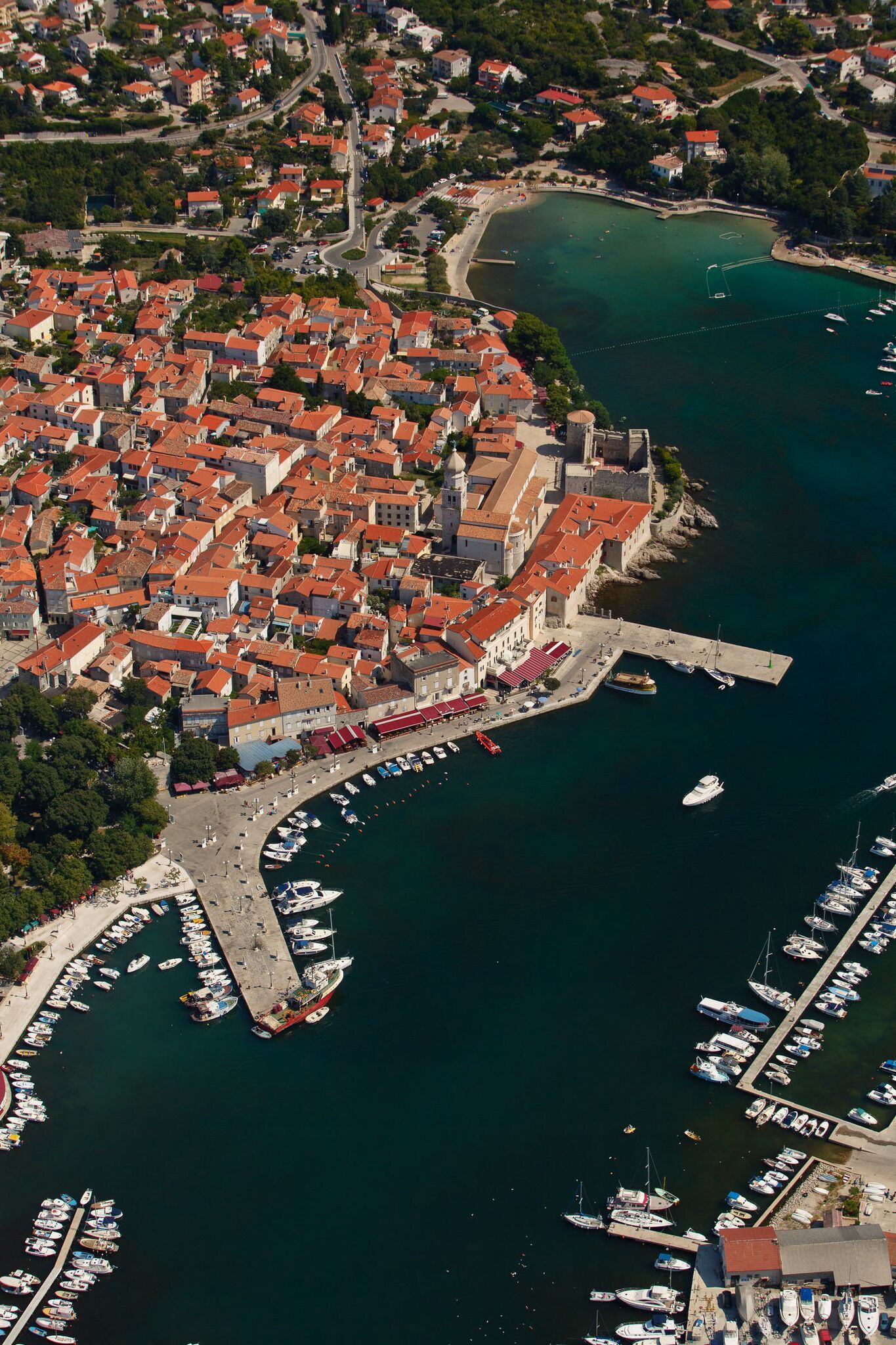
Romulić and Stojčić
Krk
Located on the northern Adriatic in the region of Kvarner, Krk was known as the biggest island in Croatia for a long, long time. While it remains the most populous one, counting some 19.000 inhabitants, it was stripped of its champion title when the latest measurements showed its neighbour Cres shares an equal size. Considering that Krk’s surface is only going to get smaller as the sea level continues to rise in the future, while the steep cliffs of Cres will prevent it from shrinking, we’re afraid the prestigious title is forever lost.
But worry not, as there’s so much more to Krk than its square footage. First of all, it has an incredible history, having been continuously inhabited since the Neolithic age. It was ruled by the Illyrian tribe of Liburnians, later giving way to the Romans. The Byzantine Empire, Croatian kings, the Venetian Republic, Austria, Italy, Germany, Yugoslavia… regimes were alternating with an increasing speed the closer we got to the 20th century. Such a large number of various cultural influences left a considerable mark on the island, along with some precious cultural and historical heritage. The island is a living, breathing display of several millennia of history – a perfect place for a week-long stay if you want to do some ambitious sightseeing, but also a great destination if you just want to bask in its timeless vibe for a day or two.
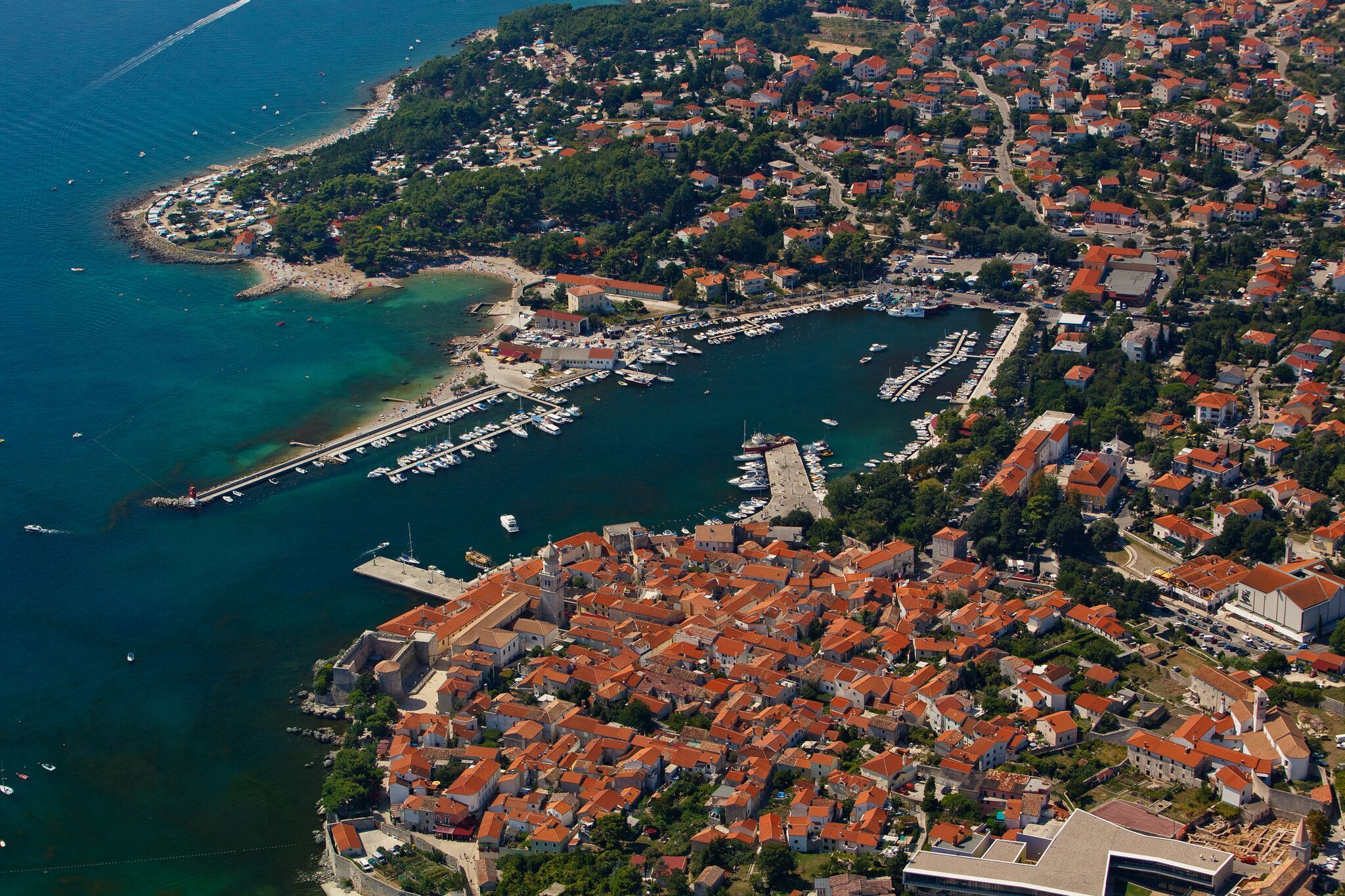
Romulić and Stojčić
There’s Krk town, the largest settlement on the island and an unavoidable destination for foodies and fans of art and culture. Vrbnik, a picturesque town perched on top of a hill, known for its indigenous variety of white wine called Žlahtina (learn more here). Malinska, a tourist hotspot and home to the legendary Hotel Haludovo – once a temple of hedonism, nowadays a deserted giant in ruins. Baška, a charming little town that gave the name to the Baška tablet; called Bašćanska ploča in Croatian, the famous stone slab containing a Glagolitic inscription from 1100 is the first historical document mentioning the Croatian name.
Oh, and let’s not forget Punat, home to the oldest marina in Croatia. Marina Punat opened in 1964 and nowadays disposes of 800 wet berths and 400 dry berths. It’s also the first Croatian marina to have been awarded the Blue Flag for the exceptional sea water quality and a pristine environment. Learn more about Marina Punat here, and find a couple more quirky facts about Krk island in this piece.
Košljun
If you actually find yourself in Punat town, make sure to set an hour aside for a visit to the enchanting islet of Košljun. A darling parcel of land covered in lush vegetation, Košljun is accessible by boat only; in case you haven’t arrived on a yacht in the first place, you’ll find two private companies offering transport from the riva in Punat to this delightful little gem. Ten minutes later, you’ll set foot on the blinding white pier where you’ll be greeted by a bronze St. Francis of Assisi.
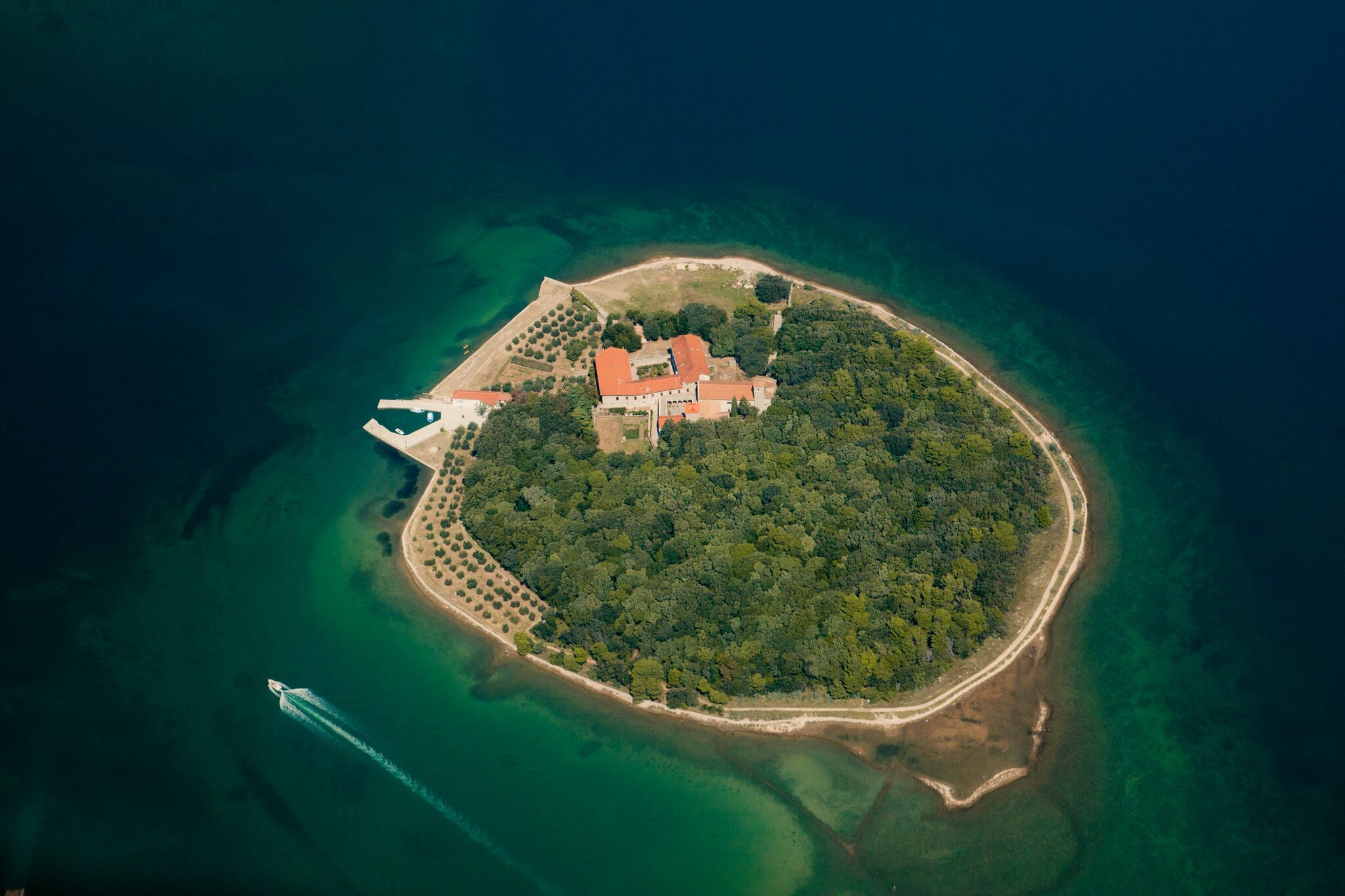
Romulić and Stojčić
Košljun is home to a Franciscan monastery and the adjacent church, the successors of the former Benedictine abbey that was built in the 9th century and expanded when the other order took over in the 15th century. The Franciscans transformed the quiet island into a vibrant centre of culture and education: they have an amazing library with some 30.000 books, including numerous incunables and other precious rare editions.
If you have some time to spare, take a look around the four themed museums tucked away in the complex, a curious mixture of priceless art displayed on 500-year-old walls and sleek, modern design of the natural history collection. In case you’re not up for taking any new information in, we won’t tell anybody – after all, you’re on holiday. Just make sure to take a walk around the beautiful complex and the surrounding gardens, and take a moment to breathe in complete silence. Peace and all good, as the friars would say – take a look at this feature for a more detailed look into Košljun.
Krk Counts
Not leaving Krk just yet – we have to pay tribute to one of the most famous noble families in all of Croatia’s history. Called knezovi Krčki in Croatian, Krk Counts (sometimes referred to as the Princes of Krk) later became known as the Frankopan, a prominent aristocratic family and major landowners, a dynasty that produced “counts, bans, viceroys and warriors… political revolutionaries in search of a better world.”
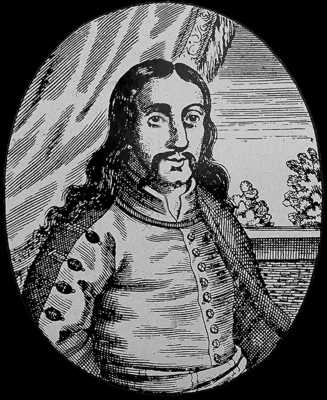
Fran Krsto Frankopan, the last member of the noble dynasty / Commons
The dynasty originates from a noble family Dujam from Krk who were granted ownership of the island by Venice in the 12th century. For the next four hundred years, the family only grew stronger and gained more influence as time went by; in 1430, they took the name Frankopan, claiming the family had some relation to the ancient Roman family Frangipani. A bit debatable, but this is not the time to tear an extinct noble lineage apart; instead, we’ll just take a quick look at their heritage.
The Krk Counts / Frankopans left behind an incredible fund of castles and fortresses; as they were known as distinguished art patrons, we have to thank them for countless works of art, literature, and precious liturgical items as well. You’ll find several Frankopan castles in Primorje-Gorski Kotar County: there’s one in Rijeka, in Trsat neighbourhood; another is to be found in the nearby area of Grobnik.
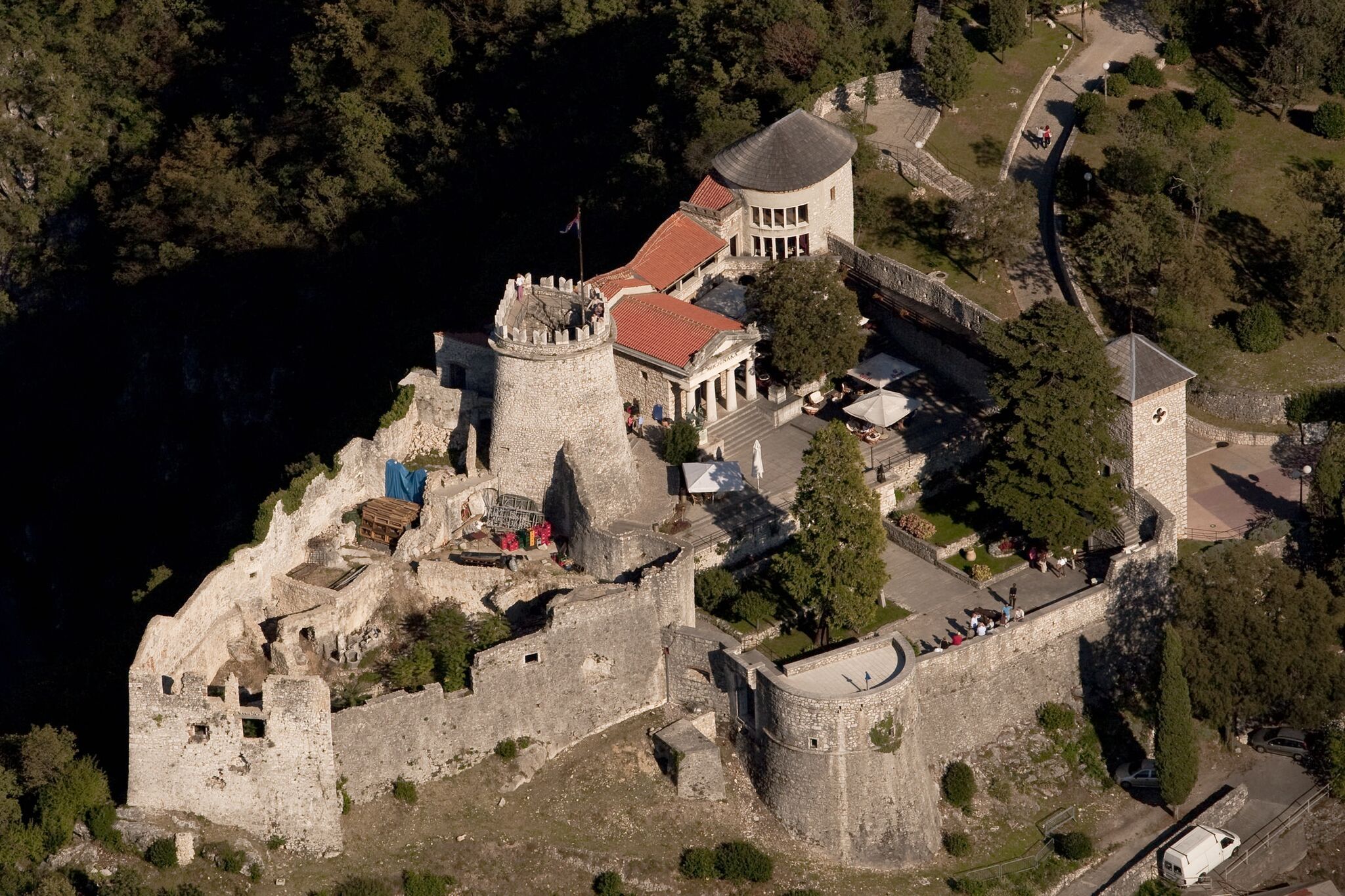
Romulić and Stojčić
Almost every town on the northern Adriatic boasts a Frankopan fortress – Krk, Novi Vinodolski, Drivenik, Grižane… the list goes on and on. Luckily, there’s a convenient way to explore the world of the noble counts: called ‘The Routes of the Frankopans’, an EU-sponsored project connected 17 castles and 3 sacral buildings into an attractive cultural-tourist route, crowned with a Visitor Centre in Kraljevica town. Learn more about the Frankopans here, and explore the route here – there’s even an app to help you plan your trip.
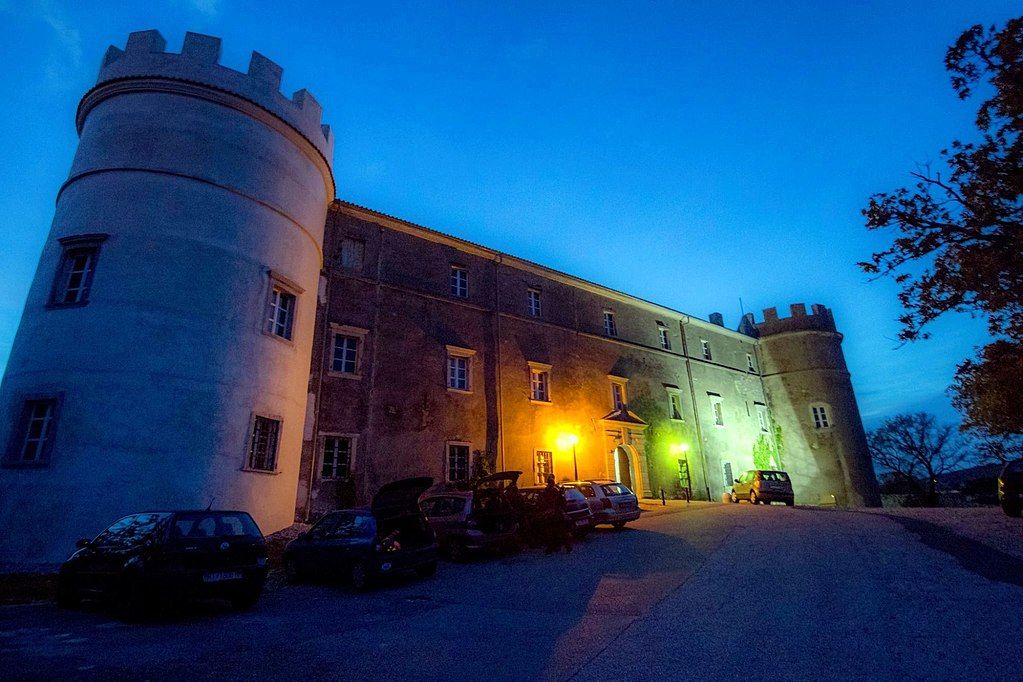
Zoran Kurelić Rabko / Commons
Karolina Riječka
Before we head to Dalmatia, a quick nod to another famous historical figure. Caroline of Rijeka (Karolina Riječka in Croatian) was a young woman of fine upbringing who singlehandedly saved the city from British invasion during the Napoleonic Wars in the early 19th century. As the English soldiers were mercilessly pillaging the city and setting the anchored ships on fire, Caroline headed straight to Admiral Freemantle, pled her case, and persuaded the commander to cease the attacks, preventing further devastation to private property and the city itself. Learn more about this icon of Rijeka in her very own feature.
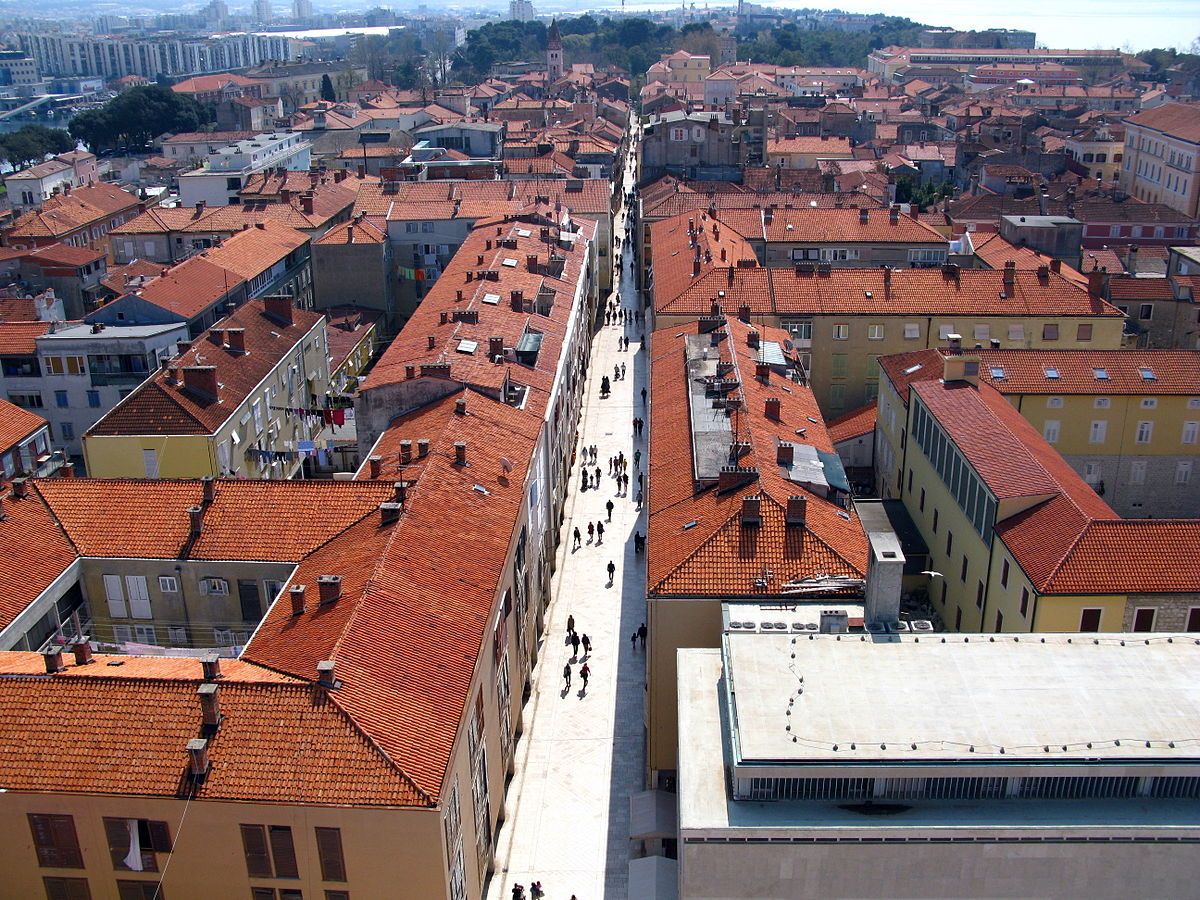
Commons
Kalelarga
Also called the Wide Street, Kalelarga is the main street in the Dalmatian city of Zadar, getting its name from the former Italian original Calle Larga. It’s said the street is older than the city itself, as it still follows the geometric grid of the ancient Roman settlement where it used to stand as the Decumanus Maximus, the main longitudinal axis. Kalelarga connects the famous Forum and the People’s Square, and it could very well be called the city’s jugular – a vivacious centre of social life in Zadar, Kalelarga has seen many a local romance blossom in its long history. It’s such an iconic urban spot, it served as inspiration for a famous song of Tomislav Ivčić, simply named – Kalelarga.
klapa
Speaking of famous songs… there’s hardly a chance you’d be able to pay a visit to Split or any other cult destination in Dalmatia without turning a corner and coming upon a lovely klapa performance. A type of traditional a cappella singing specific to the Croatian coast, klapa music celebrates the finer things in life: love, food and wine, the sea, Dalmatia, and homeland as a whole. In 2012, klapa singing joined the list of UNESCO Cultural Heritage of Humanity. Even though you’ll easily find dozens of splendid pieces on YouTube, klapa is best enjoyed in its natural habitat, so to speak: voices echoing through the narrow winding streets and courtyards in small coastal towns and villages. Or, y’know, right in the very heart of Diocletian’s Palace in Split:
Kornati National Park
Back to our island theme: did you know Croatia is home to the densest archipelago in the entire Mediterranean? The Kornati, a group of 140 islands varying in size, are named after the biggest member of the archipelago called Kornat. In 1980, the area was declared a national park; while the institution is managed by the state, most of the Kornati have been privately owned since the 13th century, first by the noble families from Zadar, later by the residents of Murter and Dugi Otok islands. There’s no infrastructure in the archipelago, save for a couple of restaurants, marinas and private homes built by landowners living on the mainland.
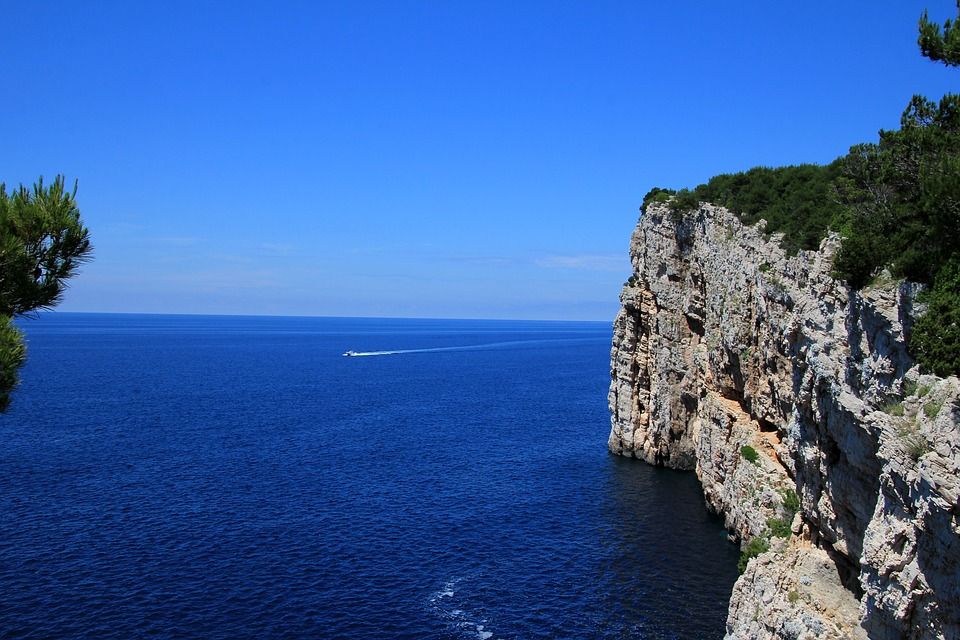
Kornati / Commons
Heaven on Earth for any lover of sailing, the Kornati are one of the most spectacular destinations you’ll find in these parts. Whether you’re looking to admire the diverse flora and fauna, explore the local cultural heritage or indulge in a phenomenal gastronomic experience in a unique setting (we’re looking at you, restaurant Fešta), you can expect an unforgettable journey. As mentioned in one of our many pieces dedicated to the Kornati, the archipelago inspired the great George Bernard Shaw to pen this poetic quote: On the last day of Creation God desired to crown His work, and thus created the Kornati islands out of tears, stars and breath. Poetic, but true, down to the very last word. Learn more about this captivating destination here.
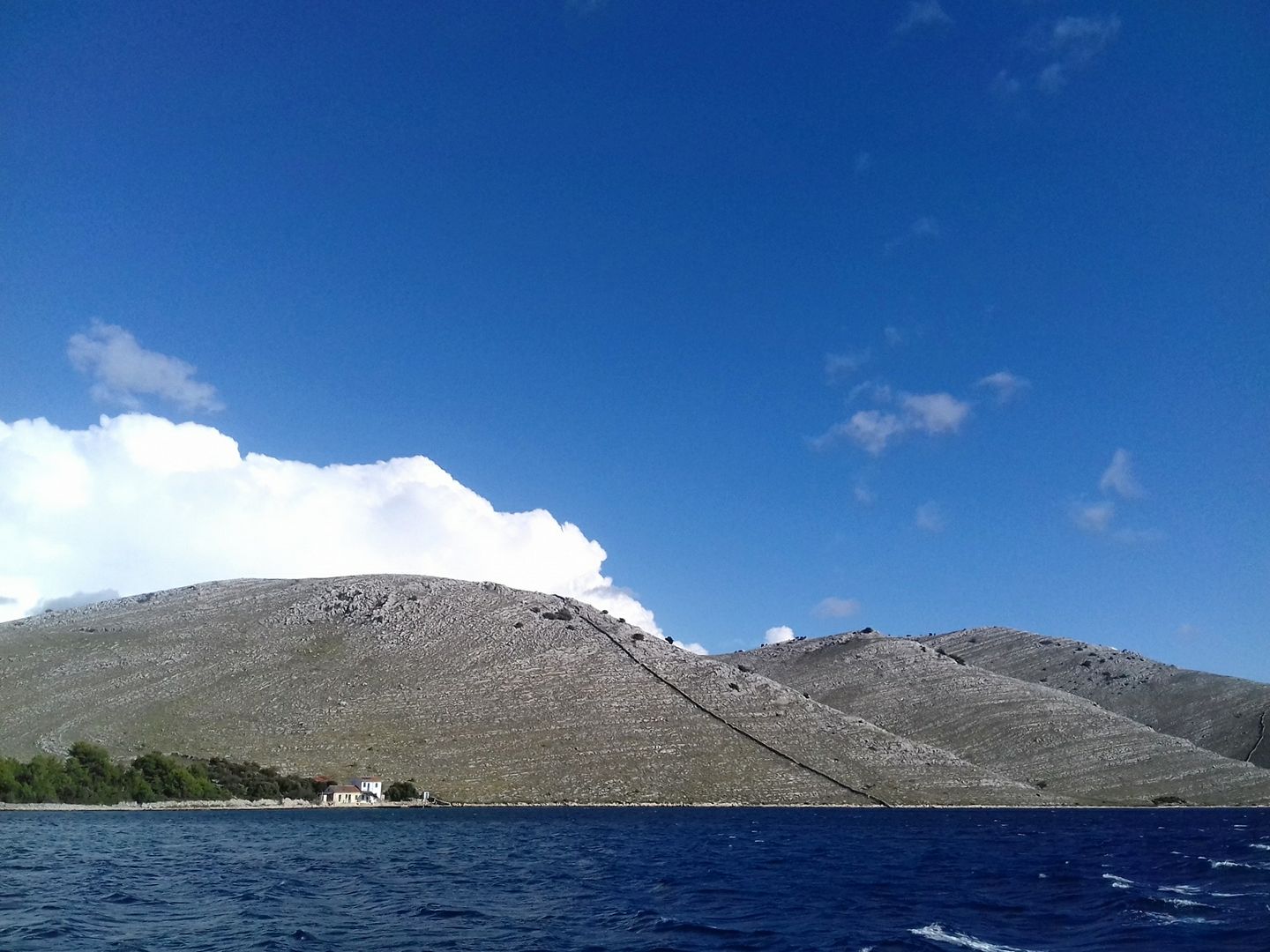
Kornati / N. Demark
Krka National Park
From one national park to another in a blink of an eye – that’s Croatia for you. The magnificent river Krka is best described as a perfect union of natural wonders and human intervention, preserved and protected so it could be admired by the coming generations. From the world-renowned waterfalls Skradinski Buk and Roški Slap to ancient Roman military camps and medieval fortresses, Krka National Park is a wonderland in its own right. There’s so much to see: the world’s second oldest hydroelectric power plant (just a couple of days late behind Tesla’s powerplant on Niagara Falls), ethno villages, monasteries, caves and pits that used to be inhabited in prehistoric times… you’ll rarely find such a diverse palette of attractions in a national park.
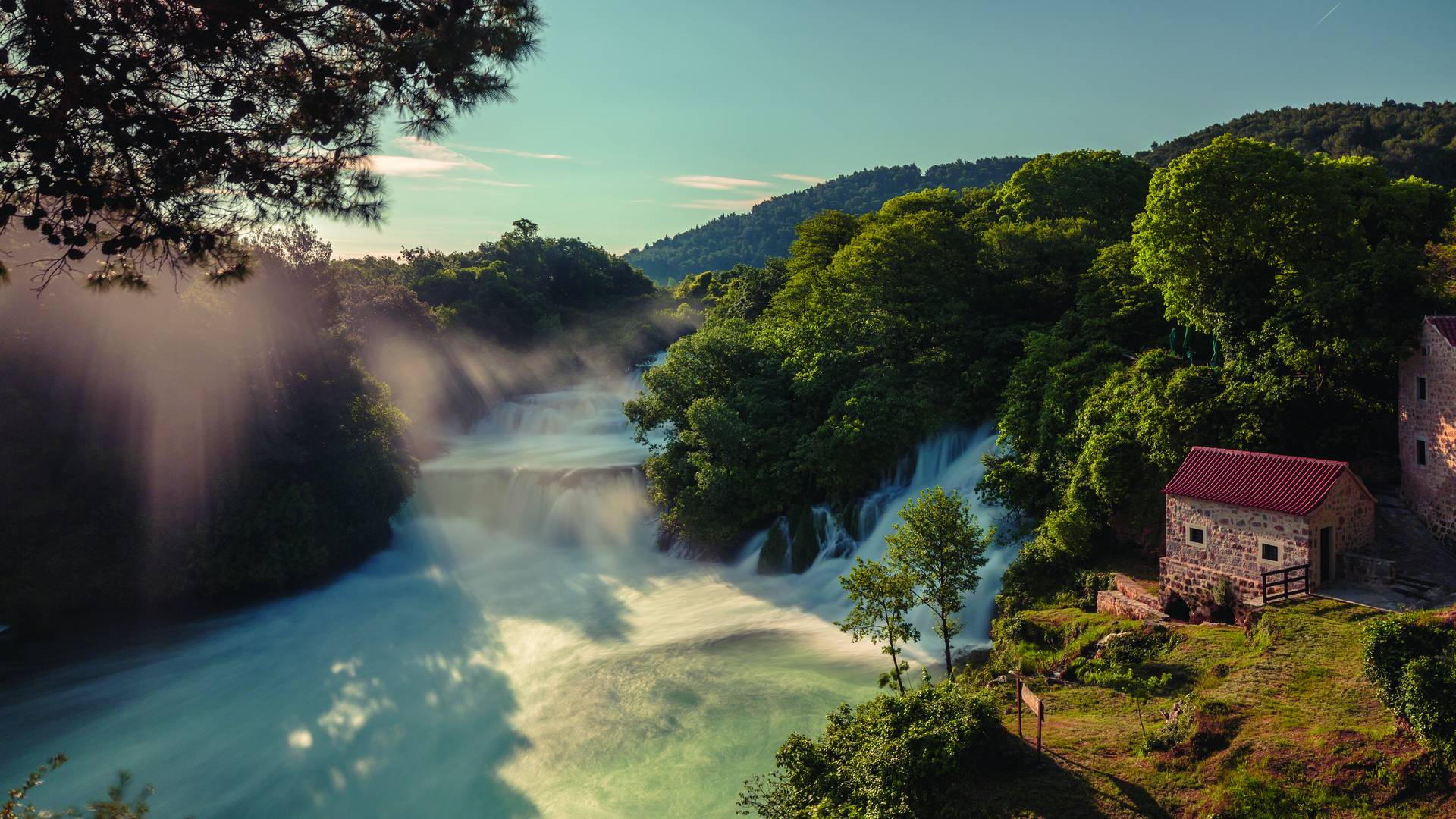
Krka NP archives / Romulić and Stojčić
If you’re planning a visit to Krka NP, make sure to set an extra day aside to explore the area properly. In the last couple of months, we’ve been doing our best to present Krka’s wonders beyond the famous waterfalls – click here, pick a topic to your liking, and learn more about the many faces of this incredible site.
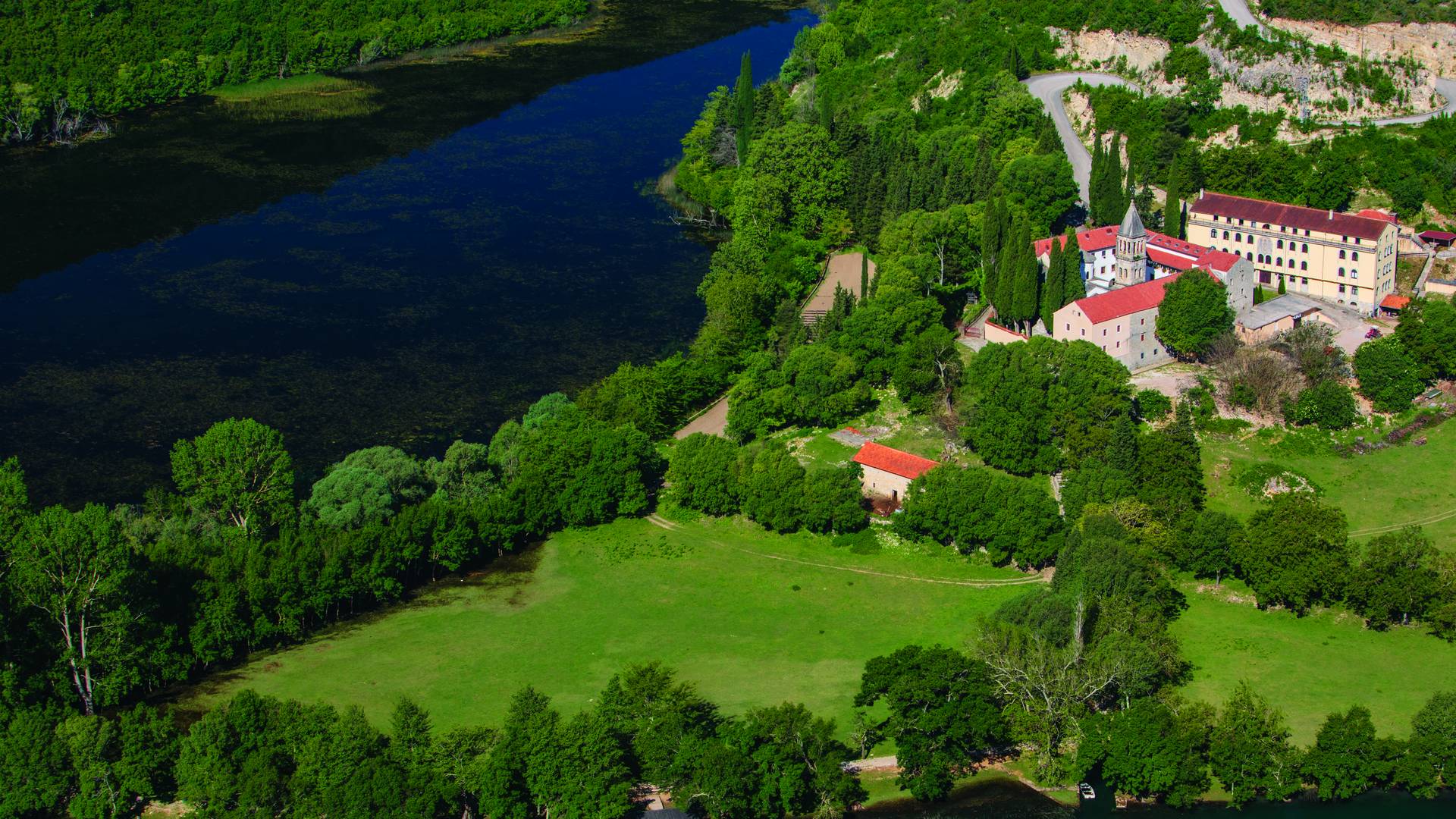
Krka NP archives / Romulić and Stojčić
Koločep
We started with an island, we’ll finish with one. As stated in the beginning of this feature, we were making our way down the Adriatic coast… right to the southernmost inhabited island in Croatia. Koločep is part of the Elaphiti archipelago situated near Dubrovnik; quite fitting in the context of our K feature, the locals also call the island Kalamota. Nowadays, Koločep has a population of some 160 residents, but back in the day, it used to be a major shipbuilding centre. How to convey the magnitude of the island’s maritime tradition? Let’s just say the crew of Santa Maria, the legendary ship that sailed to America with Christopher Columbus at the helm, included two members of Koločep origin.

